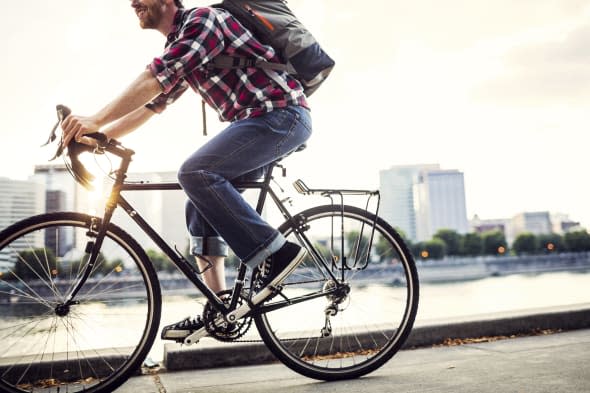How to choose a road bike

Once upon a time there were just two types of road bikes with dropped (curly) handlebars – racers and tourers – but now there are a proliferation of two-wheeled speed machines available at your local bike shop. While that's great for consumer choice, it can be baffling for newcomers to cycling – but don't worry, just let us talk you through the subtle differences between them...
Related Searches
Race bikes
The modern day "racer" is still the dominant form of road bike. Usually made from aluminium on more affordable models and carbon fibre when you get toward the £1k mark – they are light, fast and not always very comfortable. If you're only going to ride in dry conditions and you're reasonably flexible, you'll find it hard to beat one of these for thrills. There are some bargains from certain retailers for £300-odd, but generally we'd advise spending at least £500 if you can afford it.
%VIRTUAL-AFCSponserAds%Sportive/endurance bikes
Very similar to a race bike, these machines are tweaked to provide more comfort via a slightly less aggressive riding position – and sometimes a bit more give in the frame. Again aluminium and carbon fibre dominate and these bikes are popular choices among those planning to take part in long-distance "sportive" events – which have boomed in recent years. Most still feature rim brakes - rubber blocks which grab the rim – but disc brakes are infiltrating the market now and look to be the "next big thing". They are not necessarily better for everyone, but do provide better braking
Winter bike
Again similar to a race bike, but with mountings for fixed mudguards in order to allow riding in comfort in all weathers. They should also have a bit more clearance around the tyres.
Many serious riders will have a summer and a winter bike, but they can also make great choices for commuters and those who just want one bike for all year round. Steel or aluminium are the most-popular materials here, though carbon fibre and titanium do get a look in. Disc brakes are increasingly popular on winter bikes, providing better stopping in the wet and less wear to wheel rims.
Cyclocross/gravel bikes
If you want a road bike but don't necessarily just want to ride it on the road then this bit is for you. Cyclocross (or CX) bikes are designed for winter racing around muddy fields, and usually have few creature comforts apart from slightly rider tyres with small knobbles to aid grip.
But their popularity with leisure riders who want to venture onto unpaved rights of way has bred a range of new bikes which also have those chunkier tyres but add mounts for racks and mudguards and may have a more relaxed riding position. These are a bit more of a drag on the road, but might be just the ticket if you like the idea of pootling along and heading off down a bridleway or towpath when the fancy takes you.
Touring bikes
If your main objective is to use your bike to cover a lot of miles with baggage, then a good old-fashioned tourer is still hard to beat. Racks and mudguards can be attached and there's usually relaxed handling and a comfortable ride. The frame is likely to be steel or maybe aluminium, possibly with a traditional leather saddle if you're going the whole hog.
Singlespeed/fixie bikes
These were the in thing with urban trendies a few years ago – and can still be found in many bike shops. You can identify them by the complete absence of gear levers and the fact that they only have one front and one rear cog. A triumph of fashion-over-function in some senses, they're supremely inappropriate for anyone living in a hilly area or even a mildly sloping area if you're not very fit.
But if you live in Cambridgeshire or Holland, one of these could be right up your Strasse.
By the way, a "fixie" is a singlespeed which doesn't freewheel – so your legs have to go round at all times. Most don't have brakes either, instead you have to use your legs to slow down.
In a word: Avoid (unless you are Sir Chris Hoy).
Hybrid bikes
Not everyone wants to ride with dropped handlebars of course – and hybrid bikes are super-popular among commuters and beginner leisure cyclists. They combine road bike wheels with a flat handlebar, which many inexperienced riders find feels safer in traffic. While not as aerodynamic (and therefore as fast) as a dropped-bar bike, they are generally tougher and more versatile – and are perfectly capable of riding on towpaths and smoother bridleways.
Do you have any advice to share on buying a bike? Leave a comment below...




